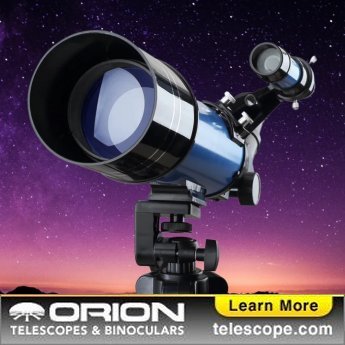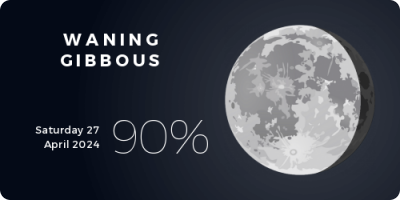Canis Minor, the Lesser Dog (CMi)
(CAN-iss MY-ner)
The Northern constellation of Canis Minor, the Lesser Dog, is best viewed in Spring during the month of March.
Canis Minor is the 71st largest constellation. It's brightest star is Procyon at magnitude 0.34. The boundary of the Canis Minor constellation contains 2 stars that host known exoplanets.
Canis Minor is an equatorial constellation, which means its bulk intersects the celestial equator or comes within 10-15 degrees of doing so. Canis Minor is visible from most places on Earth.
- Pronunciation:
- CAN-iss MY-ner
- Meaning:
- Lesser Dog
- Genitive:
- Canis Minoris
- Abbreviation:
- CMi
- Constellation Family:
- Orion
- Hemisphere:
- Northern
- Quadrant:
- NQ2
- Visibility:
- 90° N - 75° S
- Best viewing month*:
- March
- Area:
- 183 sq. degrees
- Size:
- 71st largest
- Equatorial:
- Yes
- Right Ascension (avg):
- 7h 37m
- Declination (avg):
- 6°
- Brightest star:
- Procyon (0.34)
- Stars with planets:
- 2
- Messier objects:
- |
- Caldwell objects:
- |
Brightest Stars in Canis Minor
The 10 brightest stars in the constellation Canis Minor by magnitude.
- Star
- Magnitude
- Spectral class
- Alpha Canis Minoris (α Cmi)
- 0.34
- F5IV-V
- Beta Canis Minoris (β Cmi)
- 2.89
- B8Vvar
- Gamma Canis Minoris (γ Cmi)
- 4.33
- K3III SB
- HD 66141
- 4.39
- K2III
- 6 Canis Minoris (6 Cmi)
- 4.55
- K2III
- Epsilon Canis Minoris (ε Cmi)
- 4.99
- G8III
- Zeta Canis Minoris (ζ Cmi)
- 5.12
- B8II
- Eta Canis Minoris (η Cmi)
- 5.22
- F0III
- Delta Canis Minoris (δ1 Cmi)
- 5.24
- F0III
- 11 Canis Minoris (11 Cmi)
- 5.25
- A1Vnn
Double Stars in Canis Minor
These are the brightest and easiest-to-find double, triple, and quadruple star systems in the constellation Canis Minor . Also see all star clusters.
- Star system
- Magnitudes
- Type
- Epsilon Canis Majoris
- 1.5, 7.5
- double
Galaxies in Canis Minor
The most notable galaxies in the constellation Canis Minor. Also see all galaxies.
The Cosmic Lesser Dog
Canis Minor is a small constellation in the northern celestial hemisphere. Known as the 'Lesser Dog' in Latin, it is often depicted as one of the dogs following the great hunter, Orion. Despite its smaller size, Canis Minor houses one of the brightest stars in the sky, Procyon, and is of notable interest to astronomers and stargazers alike due to its historical significance and easily identifiable pattern.
Historical Overview
Canis Minor is one of the 48 constellations listed by the 2nd-century Greek astronomer Ptolemy and continues to be one of the 88 modern constellations recognized by the International Astronomical Union today. In mythology, Canis Minor is often portrayed as one of Orion's hunting dogs, accompanying him as he hunts Lepus the Hare.
Location and Notable Features
Canis Minor is located in the second quadrant of the northern hemisphere (NQ2) and can be seen at latitudes between +90? and -75?. It is bordered by the constellations Monoceros, Gemini, Cancer, and Hydra.
The constellation Canis Minor is notable for its bright star Procyon, which is the seventh brightest star in the night sky, with a magnitude of 0.34. Procyon, also known as Alpha Canis Minoris, is a binary star system located approximately 11.46 light-years from Earth, making it one of our closest stellar neighbors.
Deep Sky Objects
Although small and seemingly sparse, Canis Minor does have several deep-sky objects, including galaxies and star clusters, but these are very faint and require a large telescope to observe. NGC 2485 is an example of such a galaxy. This spiral galaxy has an apparent magnitude of 12.4 and is approximately 122 million light-years distant from the solar system.
Observing Canis Minor
Canis Minor is best observed during the months of January through March. The constellation is relatively easy to find because of its proximity to Orion and its bright star, Procyon.
To locate Canis Minor, first, find Orion's belt. If you follow the line of the belt eastward, it will point towards Procyon. Despite its smaller size, Canis Minor's pattern of stars is easy to identify, as it consists of only two main stars, Procyon and Gomeisa, which form a simple line in the sky.
Those hoping to view the fainter deep-sky objects within Canis Minor, such as NGC 2485, will require a large telescope and ideally should be located in areas with low light pollution for the best visibility.
In summary, Canis Minor may be a small constellation, but it boasts one of the brightest stars and has a unique simplicity that makes it stand out in the night sky. From its mythological origins to its modern astronomical significance, Canis Minor is a constellation worth observing for anyone interested in the cosmos.
* Constellation shown for northen hemisphere skies. For the southern hemisphere, constellations appear rotated 180 degrees (upside-down and left-right reversed) from what is shown. Remember that seasons are reversed too - summer in northern latitudes is winter in southern latitudes.
** Circumpolar constellations are visible year-round in the hemisphere listed (and not at all in the opposite hemisphere).





